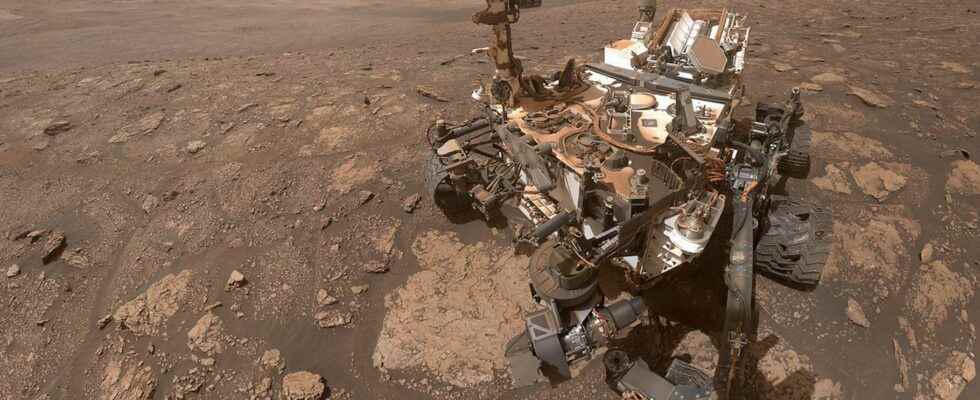The American Space Agency decided on Monday April 25 to extend the life of seven planetary probes and a rover, following a new evaluation. It is traditional to extend the duration of planetary missions, as long as the probes are in good condition to provide data. Overview of extended missions.
You will also be interested
[EN VIDÉO] Osiris-Rex says goodbye to Bennu The mission of Osiris-Rex (Nasa) was to collect rock samples from the surface of the near-Earth asteroid Bennu and bring them back to Earth. The first objective was fulfilled in October 2020. For the second, it will be necessary to wait until September 2023. But the machine returned to Earth on Monday May 10, 2021. Back in video on this incredible scientific and technological adventure. (in English) © Goddard Space Flight Center, NASA
All these probes have already brought scientific results during their initial lifetime or are in mission expansion. Barring exceptions, agencies generally intend to use the probes well beyond their initial mission duration. For example, the martian rover Opportunity had an initial lifespan of 90 days. In the end, he rode for nearly fourteen years until that a sandstorm deprived him of light for months, ending his mission. The extensions were decided on the advice of a panel of independent experts from academies, the Nasaand the space industry.
Expansion of Mars missions
Multiple probes orbitals had their term of office extended. This is the case first of the Maven probe. Since its implementation orbit in September 2014, the probe studies the interaction between the Martian atmosphere and the Martian magnetic field with the Sun, especially when it is at its peak of activity. This was the case in 2014 when the probe arrived around Mars. The next peak of solar activity is expected in 2023-2024. Therefore, Maven’s mission has been extended for three years.
The Mars Reconnaissance Orbiter (MRO) and Mars Odyssey probes have also been extended for three years. These two probes are already quite old. MRO arrived in orbit around the Red Planet in 2006 and continues to provide beautiful images of the surface with the HiRISE instrument. Mars Odyssey is the oldest space probe around Mars (all nations combined), with more than 20 years of mission! (She arrived in October 2001.) The two probes also serve as relays between Earth and the Curiosity rovers and Perseverance. MRO and Odyssey will continue to study Martian ice and rocks, while following the climate of the planet.
On the ground, it is rover Curiosity, which benefits from a further three-year extension. Next August, the rover will have been rolling on Mars for ten years and analyze your soil. He has traveled more than 27 kilometers and will continue to climb higher into the Gale crater in search of layers of sulphates. The study of the latter gives us exclusive information on the history of water on Mars. Finally, the Mission Insightposed in November 2018, and which records the earthquakes Martians with the French instrument Seis, has been extended until the end of 2022. Indeed, the solar panels are covered too much with sand and dust to give him more timeunless a whirlwind ” Dust Devil » come and clean it all up.
New mission for Osiris-Rex
As a reminder, the probe Osiris-Rex took many samples from the surface of theasteroid Bennu in October 2020. Today, the probe flies towards the Earth to drop the sample capsule there on September 24, 2023. After that, it will be reassigned to a new mission: to orbit the asteroid NEO Apophis. The latter, with a diameter of nearly 370 meters, will pass just 32,000 kilometers from Earth in 2029. Shortly after, the probe goes into orbit around him. This will be the opportunity to study an S-type asteroid up close for the first time and see the effects on its surface caused by its passage very close to our Planet. Therefore, the mission has been extended for nine years and will take the name Osiris-Apex for Apophis-Explorer.
The famous mission new horizons was also extended. After flying over Pluto in 2015, then the icy body Arrokoth (formerly Ultima Thule) of the Kuiper belt in 2019. Its mission is now to study the confines of the Solar systemmore than 63 times the Earth-Sun distance (63 astronomical units). It is therefore no surprise that New Horizons has been extended for three years.
Finally, the last mission to be extended is the lunar probe Lunar Reconnaissance Orbiter (LRO). This probe scrutinizes the lunar surface since June 2009. Extended for three years, LRO must in particular target the zones of the lunar South Pole which are permanently in the shade, where there could be water ice. His observations will continue to prepare for the return of the United States to the Moon.
Interested in what you just read?
